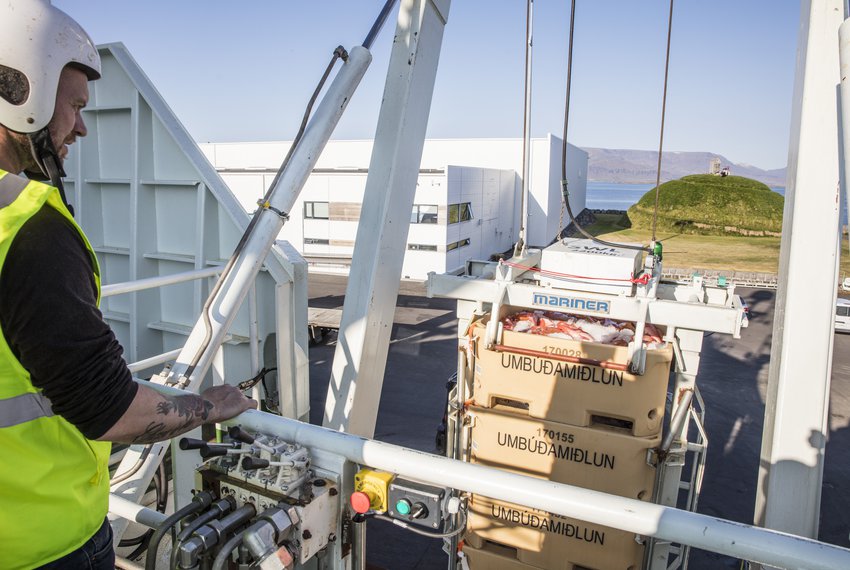HB GRANDI ACTION PLAN FOR HEALTH AND SAFETY IN THE WORKPLACE
A risk assessment forms the basis of all occupational health and safety work. Great importance is placed on such work being efficient and dynamic and that it is carried out in accordance with applicable legislation.* The risk assessment contains action plans with timed actions and the names of the responsible parties. Action plans for safety and health are prepared in writing and establish policies regarding the working environment, health and safety in the workplace.
OCCUPATIONAL HEALTH AND SAFETY POLICY
HB Grandi is a reliable workplace where the management and employees care about the well-being and health of their colleagues. The safety management system of the company covers all the operations of the company, registration and review of accidents and incidents. Risk assessments and safety rules are key factors, and focused training and education play an important role.
WE AT HB GRANDI ARE DETERMINED TO CONCENTRATE ON OCCUPATIONAL HEALTH AND SAFETY AND CREATE A SAFE WORKING ENVIRONMENT FOR OUR EMPLOYEES.
- We are all responsible when it comes to occupational health and safety.
- We respect each other and look out for each other.
- We are proud to work in a workplace where safety issues are taken seriously.
Responsibility
In order to ensure the efficiency of occupational health and safety work, it is important that employees know the scope of their responsibilities as regards occupational health and safety. Everyone is responsible for their own safety, and all employees are under obligation to notify of any risks in the workplace and to follow established rules. Safety officers must work on improving safety in the workplace and make sure that the measures employed are effective. The first mate is the head of safety issues on board a vessel and manages rescue training exercises. Production managers, plant managers and captains are responsible for occupational health and safety in their workplaces. Managing Directors and fleet managers are responsible for occupational health and safety in their fields. The Health and Safety Director is responsible for the company’s occupational health and safety issues and represents the CEO in these matters.
In order to achieve further success in safety matters and decrease the number of accidents, it is important to ensure that safety awareness is regularly discussed, to remind each other when safety aspects are forgotten, co-ordinate job descriptions between work stations, increase the efficiency of risk assessments and improve the working environment of staff even further.
Safety officers
The company has a total of 70 safety officers that are members of safety committees. There are a total of thirteen safety committees operating within the company. Safety officer is a term that covers both safety guards that are nominated by the manager of the operating unit in question and the safety representatives that are elected by employees. The role of safety officers is to ensure that issues relating to occupational health and safety are in accordance with applicable laws* and the policies of the company.

*Act on Working Environment, Health and Safety in Workplaces, No. 46/1980. Regulation No. 200/2007 on measures to encourage improvements in the safety and health of workers on vessels.
Risk assessment
A risk assessment is an improvement project that requires constant revision. The risk assessment must be updated annually and also when any changes are made to buildings/equipment or in the event of an accident. In addition, a risk assessment must be performed before embarking on any new construction. Risk assessments are used to find risks, respond to such risks and carry out the appropriate mitigating measures. On performing a risk assessment, the participation of employees who are most familiar with the environment and conditions is encouraged. The degree of seriousness is assessed based on probabilities and consequences; thereafter tasks are prioritised and the appropriate improvements made. Employees take an active part in the assessment and are informed of their role as regards implementation and follow-ups. Employees have access to risk assessments. Below is a short video on risk assessments. The video is accessible on the intraweb of the company and forms a part of the safety and new recruit education package.
PREVENTIVE MEASURES
Occupational health and safety issues are an important part of HB Grandi’s educational schedule. During new recruit orientation, the staff of the company carefully go over aspects that relate to occupational health and safety.
Preventive measures and education on board the company’s vessels are largely handled by the new recruit orientation carried out by vessel officers as well as during regular rescue exercises in which the entire crew participates. Great importance is placed on vessel officers holding regular rescue exercises, at least twelve times a year.
HB GRANDI 2017 SAFETY DAY
HB Grandi’s Safety Day was held for the second time on 24 October 2017. The gathering consisted of 60 members of management and safety officers from land and sea operations. The CEO of HB Grandi opened the meeting with an address. The Health and Safety Director reviewed responsibilities, policies, new safety rules and accidents. The Technical Manager of Fishing Vessels reviewed safety issues relating to vessels. The foreman in Norðurgarður discussed the status of safety issues and described the improved safety culture in the fish processing plant. In addition, the production manager of the pelagic freezing facilities in Vopnafjörður gave a talk on the newly completed evacuation exercise. Finally, a new electronic accident registration system was presented.